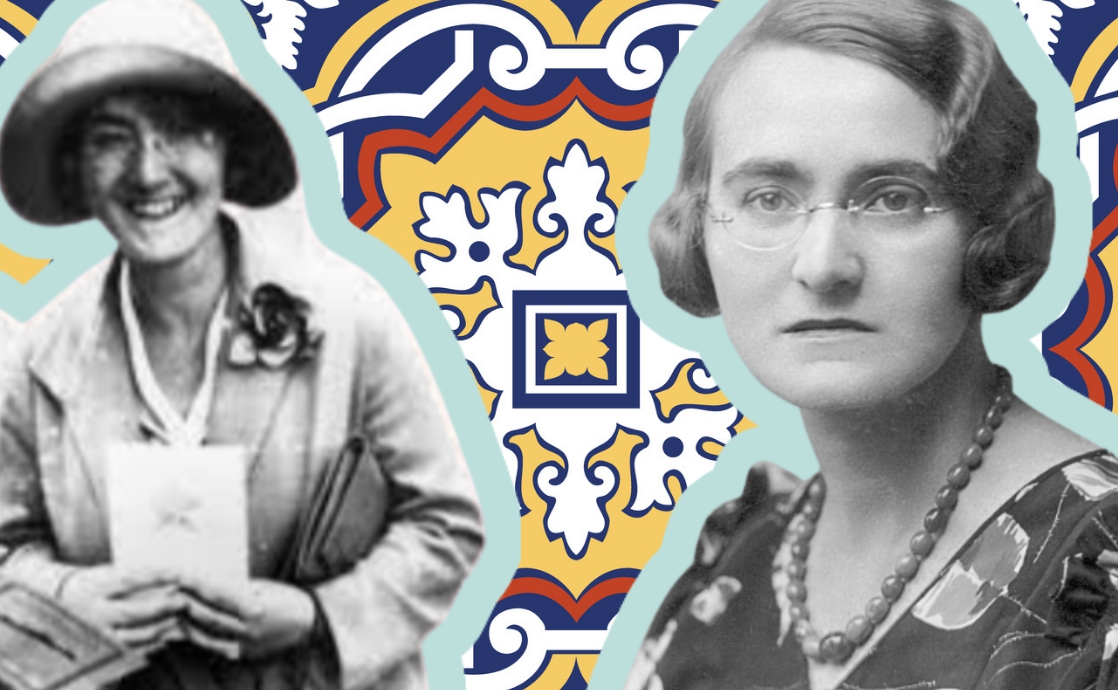The views expressed in our content reflect individual perspectives and do not represent the authoritative views of the Baha'i Faith.
Not every peacemaker spends his or her life working directly against war. Instead, some of the most effective proponents of peace have taken a different direction by advocating for a universal language.
Imagine, if you will, what would happen in our world if we all became bilingual, learning two modes of communication from a young age: our native tongue and a language spoken and shared by everyone on Earth.
Finally, we could speak to anyone anywhere on our planet, without the difficulties and potential misunderstandings inherent in translation. We could share a linguistic culture. We could unite.
RELATED: What Language Do You Pray In?
This peace-building ideal of the global adoption of a universal auxiliary language constitutes one of the primary principles of the Baha’i Faith, as expressed in his writings by Baha’u’llah, its prophet and founder:
Among the things which are conducive to unity and concord and will cause the whole earth to be regarded as one country is that the divers languages be reduced to one language and in like manner the scripts used in the world be confined to a single script. It is incumbent upon all nations to appoint some men of understanding and erudition to convene a gathering and through joint consultation choose one language from among the varied existing languages, or create a new one, to be taught to the children in all the schools of the world.
The day is approaching when all the peoples of the world will have adopted one universal language and one common script. When this is achieved, to whatsoever city a man may journey, it shall be as if he were entering his own home.
Soon after Baha’u’llah’s revelation began to become known in multiple places around the world, several movements sprang up to construct, speak, advocate for, and adopt a universal auxiliary language (often abbreviated as IAL, for international auxiliary language, or shortened to auxlang). The first of those attempts, called Volapük, emerged in 1879, but was soon supplanted by Esperanto, an artificially-constructed language invented by L. L. Zamenhof, a Polish ophthalmologist, during the late 1800s. Dr. Zamenhof actually began inventing Esperanto at the age of 14, convinced that a universal language would give people a new way to communicate fairly and freely. Today, Esperanto has since become the most widely-utilized auxiliary language in the world. (Wikipedia has an informative entry on the fascinating subject of international auxiliary languages here.)
Dr. Zamenhof, a polyglot Jewish linguist himself, developed Esperanto with one goal in mind: world peace. He said “Break, break the walls between the peoples,” as he formulated Esperanto, which he originally called the lingvo internacia. His first known poem in the language goes like this:
Malamikete de las nacjes
Kadó, kadó, jam temp’está!
La tot’ homoze in familje
Konunigare so debá.
Let the hatred of the nations
Fall, fall! The time is already here;
All humanity must unite
In one family.
Dr. Zamenhof and his wife Klara had three children, and their youngest daughter Lidia took up and eventually headed her father’s cause after his early death at the age of 57 in 1917. As a young college student, Lidia Zamenhof learned of the Baha’i Faith from journalist, world traveler, and Baha’i teacher Martha Root in 1925, and at the age of 21 became a devoted Baha’i for the rest of her life.
In the Baha’i teachings, Lidia found her father’s dearest wish – that all humanity must unite in one family. As Abdu’l-Baha, Baha’u’llah’s son and successor, said:
Baha’u’llah has proclaimed to the world the solidarity of nations and the oneness of humanity. Addressing all mankind He has said, “Ye are all leaves of one tree and the drops of one sea.” The world of humanity has been expressed by Him as a unit – as one family.
During the next dozen years, Lidia earned her degree in law and travelled the world to teach Esperanto and the Baha’i Faith. She promoted and taught the language, attended Esperanto World Congresses, and spoke to thousands of people about the Baha’i revelation and Baha’u’llah’s advocacy of a universal language.
RELATED: A Universal Language: the Words of the Prophets
But in the mid-1920s, after Adolf Hitler falsely wrote in Mein Kampf that Esperanto had been created to “unite the Jewish diaspora,” the Fascist movements in Europe turned against the language. In 1937, amid the continuing rise of Germany’s Nazi party, three events occurred that put Lidia Zamenhof’s life and Esperanto itself in jeopardy: a threatening visit to Warsaw by the Nazi military leader Herman Goering; the Reichsfuhrer Heinrich Himmler’s announcement of the Nazi ban of the Baha’i Faith in Germany (after his ban of all Esperanto organizations a year earlier); and a widespread spate of violent assaults on people of Jewish descent in Poland.
As a consequence, Lidia left her home in Warsaw and went to the United States for an extended stay, which might have become permanent except for one factor. In December of 1938 she was forced to leave the U.S. by its Immigration Service, which declined to extend her tourist visa because of her alleged illegal “paid labor” teaching Esperanto. After returning to Poland, she travelled around the country teaching Esperanto and the Baha’i Faith, even though both activities exposed her to great danger.
Lidia knew, because of her faith as a Baha’i as well as her Jewish heritage, that she would be targeted by the Nazis, especially after the Third Reich invaded and occupied Poland in 1939. Many fellow Baha’is and several Esperantists offered her refuge or escape, but she demurred. Confined with her family in the Warsaw ghetto, Lidia helped others get medicine and food. Her last known letter advised one person who tried to help her:
Do not think of putting yourself in danger; I know that I must die but I feel it is my duty to stay with my people. God grant that out of our sufferings a better world may emerge. I believe in God. I am a Baha’i and will die a Baha’i. Everything is in His hands.
That heroic, remarkable level of self-sacrifice and compassion for others characterized Lidia Zamenhof’s final few years on Earth. Shoghi Effendi, the Guardian of the Baha’i Faith, posthumously recognized Lidia for her tireless work on behalf of world peace:
The daughter of Dr. Ludwig Zamenhof, creator of the international language Esperanto, she translated numerous works of Baha’i literature into Esperanto and traveled widely to spread the message of Baha’u’llah and teach Esperanto. In 1942 she and her family, who were Jews, were taken to a concentration camp. Two years later she died in the gas chamber at Treblinka. Commemorative observances were held for her throughout Canada and the United States in October 1946.
Lidia Zamenhof’s courageous life – dedicated to the bedrock Baha’i principles of love, peace, the oneness of humanity, and a universal auxiliary language – will always serve as a luminous example of what it means to be a true Baha’i.
















Comments
Sign in or create an account
Continue with Googleor